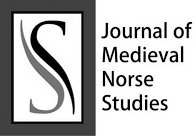MOVILIDAD, COMUNIDAD Y CONTACTO CULTURAL: ROLES Y PARTICIPACIÓN DE LAS MUJERES EN LA CONSTRUCCIÓN, REPRODUCCIÓN Y TRANSMISIÓN DE LA IDENTIDAD DIASPÓRICA VIKINGA
Abstract
The migrations of Scandinavian peoples that took place from the 8th century onwards formed a diaspora whose settlements extended from the Volga to the island of Newfoundland. As a diasporic group, these populations shared the same origin and common cultural elements, as well as a notion of belonging to a transterritorial human community. But this identity was not based solely on the fact of the Scandinavian provenance: it had to be constantly reaffirmed and transmitted from generation to generation. This article explores women’s participation in the construction and maintenance of this diasporic identity as a social and cultural strategy, especially in those spaces where other ethnic groups coexisted.
Downloads
Downloads
Published
Issue
Section
License
The author (s) of the original submitted undertake to comply with the following:
- All authors are publicly responsible for it.
- The authors claim that this original is their own and that they assume full responsibility to third parties, whether moral or patrimonial, by reason of its content, stating that the work does not infringe any intellectual property rights of third parties.
- The author (s) agree to the copyrights of the original to Scandia Journal, to which they grant permission for its reproduction, editing and online publication.
- The author (s) grant their copyright of their original to the Scandia Journal, licensed under the Creative Commons Attribution License, which allows the sharing of this work with the acknowledgment of their authorship.
- The author (s) have permission and are encouraged to cite and distribute their original.



